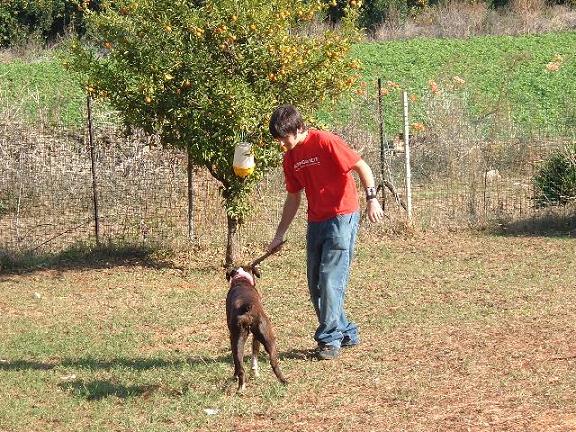Principles of Animal Assisted Therapy
Principles of Animal Assisted Therapy
Over the last two years HAMA has placed a central emphasis on its work with children, most of whom are between the ages of 4-14. Many of these children are “children at risk”. Their parents, are often “lost children” themselves, with their own histories of neglect and abuse. They have tragically come full circle and evolved into what they feared most as children.
They have become their own parents -- “parents at risk”. Sometimes a child must be taken out of his biological home. The results are often devastating. The nuclear family is torn apart, and feelings of alienation, anger, and rejection become part of many children’s legacies.
 Many conventional social service networks do not have the human resources and the personal outreach capabilities to save a child by treating the entire family.
Many conventional social service networks do not have the human resources and the personal outreach capabilities to save a child by treating the entire family.
Over the years HAMA has focused upon the child and his family. Both are essentially important to the other in the therapeutic process. We have come to recognize that while we and our canine and feline helpers may be a positive and enriching episode in a child’s life, his parents are the story of that child’s life for the rest of his life. If we can facilitate correct child-parent bonding, communication and attachment, then we have contributed significantly to a child's most critical years of physical and emotional development and to the empowerment of his parents as guardians and individuals in their own right.
AAT (Animal Assisted Therapy) is not necessarily verbal, since many children (and many of their parents) cannot express themselves adequately through conventional cognitive therapy alone. Our "feline and canine co-therapists" provide a primary need of love and acceptance to both child and parent. Dogs and cats are extremely intelligent and socially interactive animals. They carry with them strong associations of family. Most parents remember a cat or dog in their childhood, which in turn helps them to identify, understand and empathize with their own children’s needs.
Projection and identification are particularly strong and compelling components of our therapy. Many of our families’ first reactions to our cats and dogs living, working and playing together as a cohesive family team elicit feelings of utter disblief. Both children and their parents share a mutual family history of never ending "conflictual" or "irreconcilable" issues. The never ending divorce war that never ended, even years after the divorce, the guilt, separation, longing, sibling rivalry for parental affection and acceptance, and the post-traumatic issues, which were never confronted or treated, all rise to the surface, and our animals, yes our animals make this possible.
When children interact with our animals, they are using the cat or dog as a protective shield to finally talk about themselves without betraying the family secrets they are sworn to never tell, without the fear of betrayal, shame, and disclosure. A child or parent can empathize with a cat leaping�up to the highest branch in the tallest tree where she can finally be safe, and where no one can touch her against her will. Another child or parent reaches out to one of our dogs, who had to learn to walk -- and in time even run again -- after having lost one of his legs in an abusive attack by people. A child, who has lost his eye through a terrorist attack may feel devastated and powerless, until he becomes the rehabilitating force for a Pekingese puppy who lost his vision through a brutal and unprovoked attack by a Bull Terrier.
Dynamic transference is a key element in AAT. Our cats and dogs work together as a team and prove that irreconcilable conflict and pain can become more reconcilable and less painful, once we as a family learn to appreciate, respect, and confront the special gifts and hardships of everyone within our family.